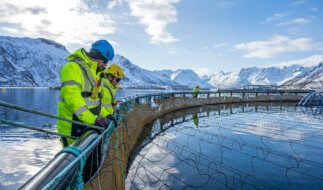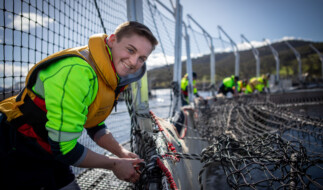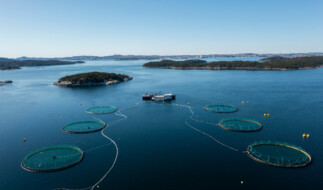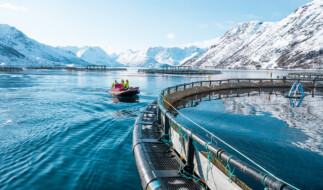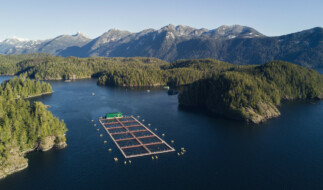GSI’s ESG Feed Risk Assessment Tool: A Conversation with Kristina Furnes
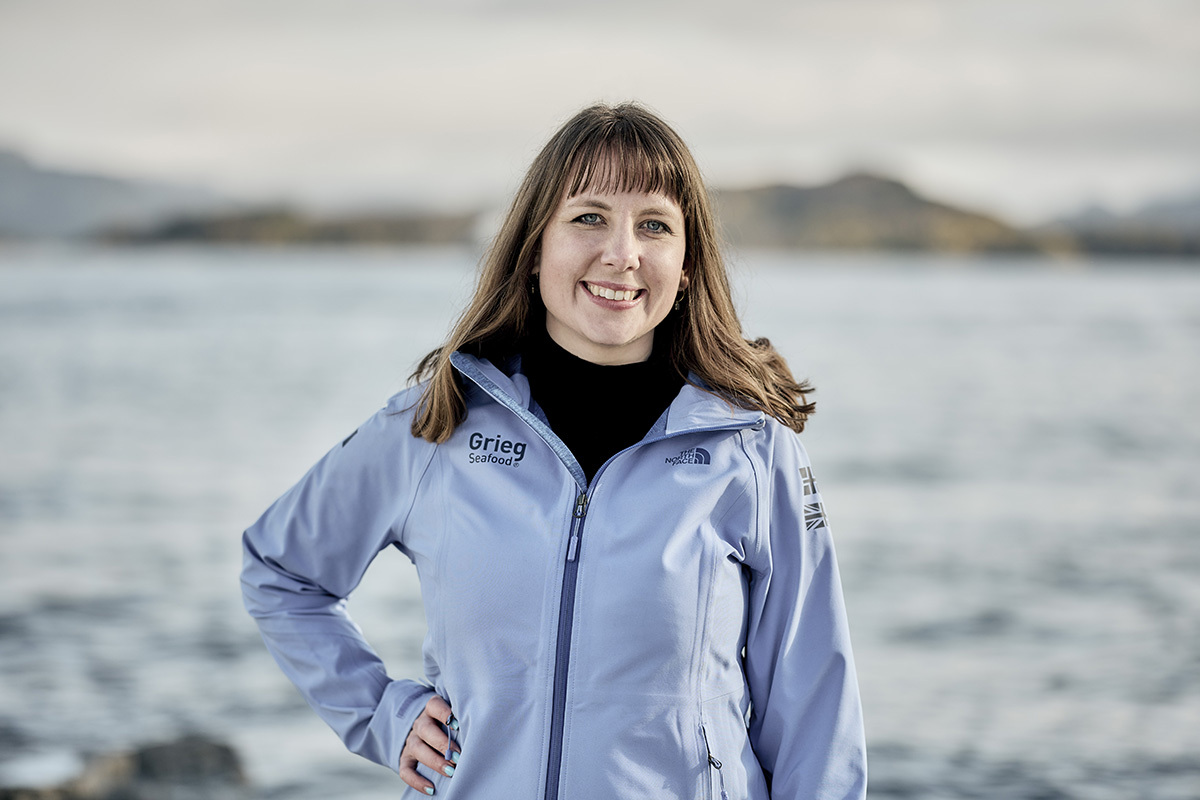
This week, Global Salmon Initiative and World Wildlife Fund (WWF) launched the first Environmental, Social, Governance (ESG) risk assessment tool for feed ingredients. We sat down with one of the project leads, Kristina Furnes, to highlight the intended impacts of the ESG tool.
Thanks for taking the time to chat with us, Kristina! To kick off, can you tell us a little about yourself, and your work as Chief Communications Officer at Grieg Seafood?
I have been with Grieg Seafood for 5 years now, and my role focuses on stakeholder relations and engagement. Part of my job is to understand what our stakeholders expect from us, both as an industry and as a company, internalize challenges and goals, and make sure we deliver on the relevant aspects. I enjoy working in the aquaculture sector because the sector has so much potential. Blue foods, like farmed salmon, play an important role in a more sustainable food system, but there are still challenges for us to solve. I love that my work is making a difference in the improvement journey of the industry.
Can you tell us about the objective behind the ESG Feed Risk Assessment Tool?
The objective of the ESG tool is to improve the transparency and traceability of ESG risks in animal feed production. Only when you know what risks exist in a value chain can you start the work of improving it. Industry or geographical averages, which many standards rely on, can give a good starting point, but they won't help with the actual work of improving the value chain. The reason is that the impacts may vary 100x or more within the same ingredient in the same geography, depending for instance on farming practices. While it will take time, the ESG tool aims to increase knowledge about the risks in our supply chain year by year. The ESG tool also provides a common methodology that all players in the animal feed value chains can use, making the work more efficient for all, which will drive change faster.
How did the ESG Feed Risk Assessment Tool start, and how did the partnership between Grieg Seafood, WWF, and GSI come to light?
The ESG project started around 4 years ago when we at Grieg Seafood were looking to have a greater awareness of ESG risks in our supply chains. We were tired of reacting to issues and wanted to address our challenges more proactively. We found there was no methodology to assess animal feed risks in a holistic way, and not even a consensus on what issues were important to assess. We were struggling to credibly compare information from our suppliers as each provided information in different formats with different definitions. However, we knew it was too large a project to work on alone, and we would need both technical counsel and wider industry support to make it work. We first reached out to World Wildlife Fund (WWF), knowing they were keen to work on improving global feed supply chains across livestock production, and together we made a draft version with input from our feed suppliers. Then we took it to GSI to bring in more industry insights. Together we were able to pool knowledge and expertise to develop a methodology covering all the key global ESG aspects.
“Pre-competitive collaboration with our industry peers was the solution to launching the ESG Feed Risk Assessment Tool and I truly believe that is the most powerful solution when tackling tough value chain questions.”
So, what is the ESG Feed Risk Assessment Tool exactly?
The ESG tool is a streamlined methodology that can be used by each GSI member autonomously to gain oversight into the sourcing of feed ingredients, work with their suppliers to understand their ESG risks, and support more informed decision-making when sourcing feed to help drive long-term improvements in the sustainability of the supply chain. The ESG tool will also help companies in different parts of the value chain ask the same questions – making the work more efficient for everyone while increasing transparency. What’s important is that the ESG tool covers all the key ESG topics – from land use and biodiversity practices, climate, circularity, nutrition, and social aspects as well as topics like scalability for novel ingredients. This means that rather than focusing on one risk at a time, we can have a more holistic overview to make more informed decisions.
This all sounds incredibly useful, but are there challenges with such a Tool?
Yes, there have been several challenges along the way, and this is to be expected when developing something completely new with far-reaching implications. The ESG tool will push the boundaries of where the industry currently is, and it has been important to be patient to ensure we get this right. We have received feedback from all stakeholders including feed companies, industry, and civil society. It also has been essential to build onto existing standards like the Aquaculture Stewardship Council (ASC) to avoid any duplication of work.
We had to determine what was covered in the ESG tool to make it meaningful but also realistic. We know that as a sector we won’t have all the answers right away, but the idea is that it is an evolving tool we build on each year as our understanding grows, as we learn more and as related science progresses.
While the specific data will remain confidential between producer and supplier, salmon farmers may report on identified risks on an aggregated level. Going forward, we hope to find a way we can safely transfer knowledge on possible ESG risks that allow us to focus efforts in accelerating sustainability improvements.
Why is this type of aligned ESG Feed Risk Assessment Tool so important?
We truly believe this ESG tool will help transform the global feed supply chain at a much faster rate than working in silos, but there are also several other benefits, including:
- Transparency. Stakeholders are demanding more transparency and rightly so! Customers want more information about where their food comes from, regulators are adding due diligence into policies, communities want measurable social impact, and investors want to evaluate and reduce ESG risk. This tool will pave the way to consistently address these needs.
- Reducing the burden on ingredient suppliers. The ESG tool will allow for collection of the same data for multiple customers, which will save time to focus on filling any gaps and driving improvements.
- Increasing understanding of industries’ environmental footprint and making improvements. Most of the questions within the ESG tool are relevant for all animal feed sectors, not just aquaculture., While the aquaculture industry is the main sector sourcing marine ingredients, we only purchase a small fraction of many of the plant-based ingredients used in feed. As such, pre-competitive collaboration with other animal protein sectors and even the pet food industry is key to improving supply chains across feed ingredients.
How does this Tool align with work from other organizations looking at ESG risks and impact?
With any work of this kind, it’s important to create tools that not only work for us, but can be useful for other stakeholders. That’s why we connected with key organizations including ASC and WWF throughout this process and receive their input along the way.
ASC has confirmed its intention to include the ESG Feed Risk Assessment Tool as part of its due diligence for its new Feed Standard. This means ASC will offer the Tool as one option auditors can use to run due diligence as part of the feed mill certification process and feed suppliers for the feed certification process.
What are the next steps for the ESG Feed Risk Assessment Tool?
The launch of the initial ESG Feed Risk Assessment Tool is step 1 of a long journey. Now the Tool must be used to get learnings and meet the growing ESG needs. Towards the end of this year, GSI members will regroup to share best practices on how the ESG Tool can be further evolved. Hopefully, we will also have received feedback from feed companies, other stakeholders and sectors that may utilize the ESG tool and engage with us moving forward.
Thank you so much, Kristina, for your hard work and commitment to helping build this game-changing ESG Tool for the industry. We know that the insights and direction it will offer will help drive awareness and build a more sustainable and transparent supply chain for the future.
Given that the launch of the ESG Feed Risk Assessment Tool aligns with International Women’s Day (IWD), we asked Kristina her thoughts on this year’s theme, ‘Inspire inclusion.’ Here’s what she said:
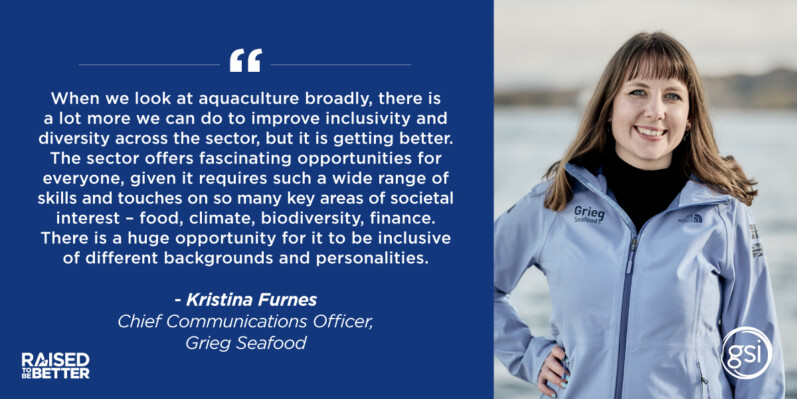
For more information on the ESG Feed Risk Assessment Tool, you can read the press release here.
